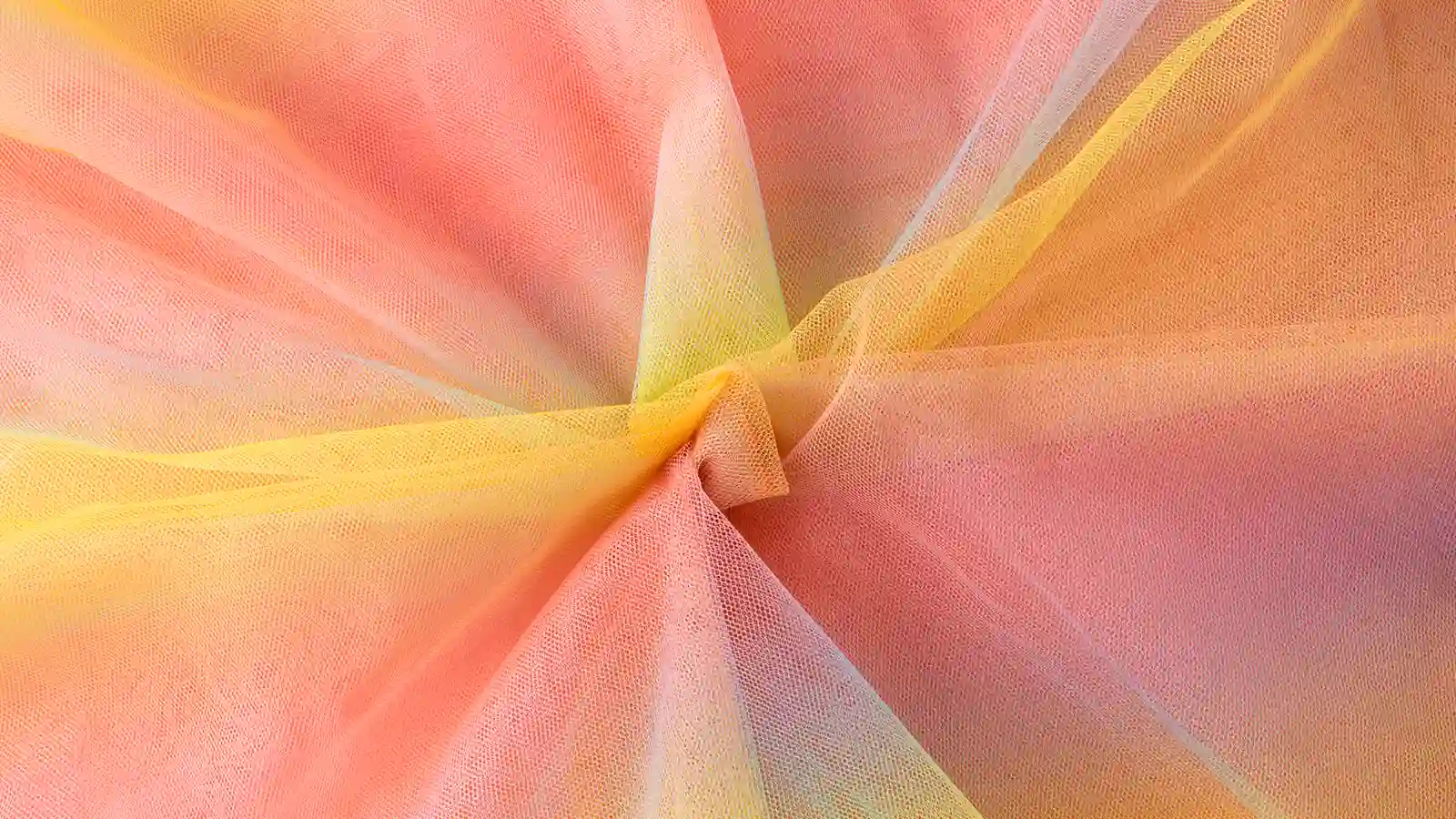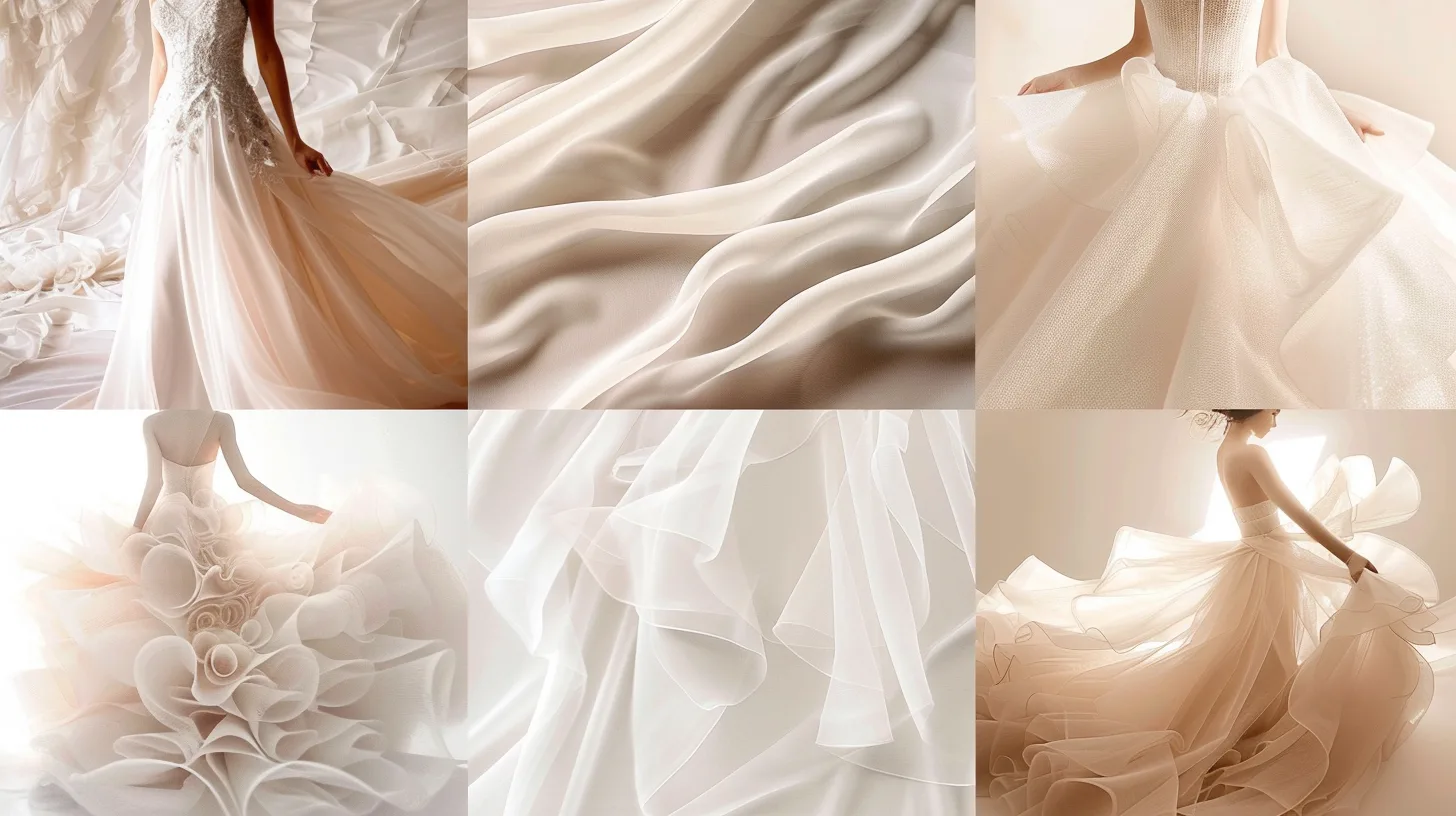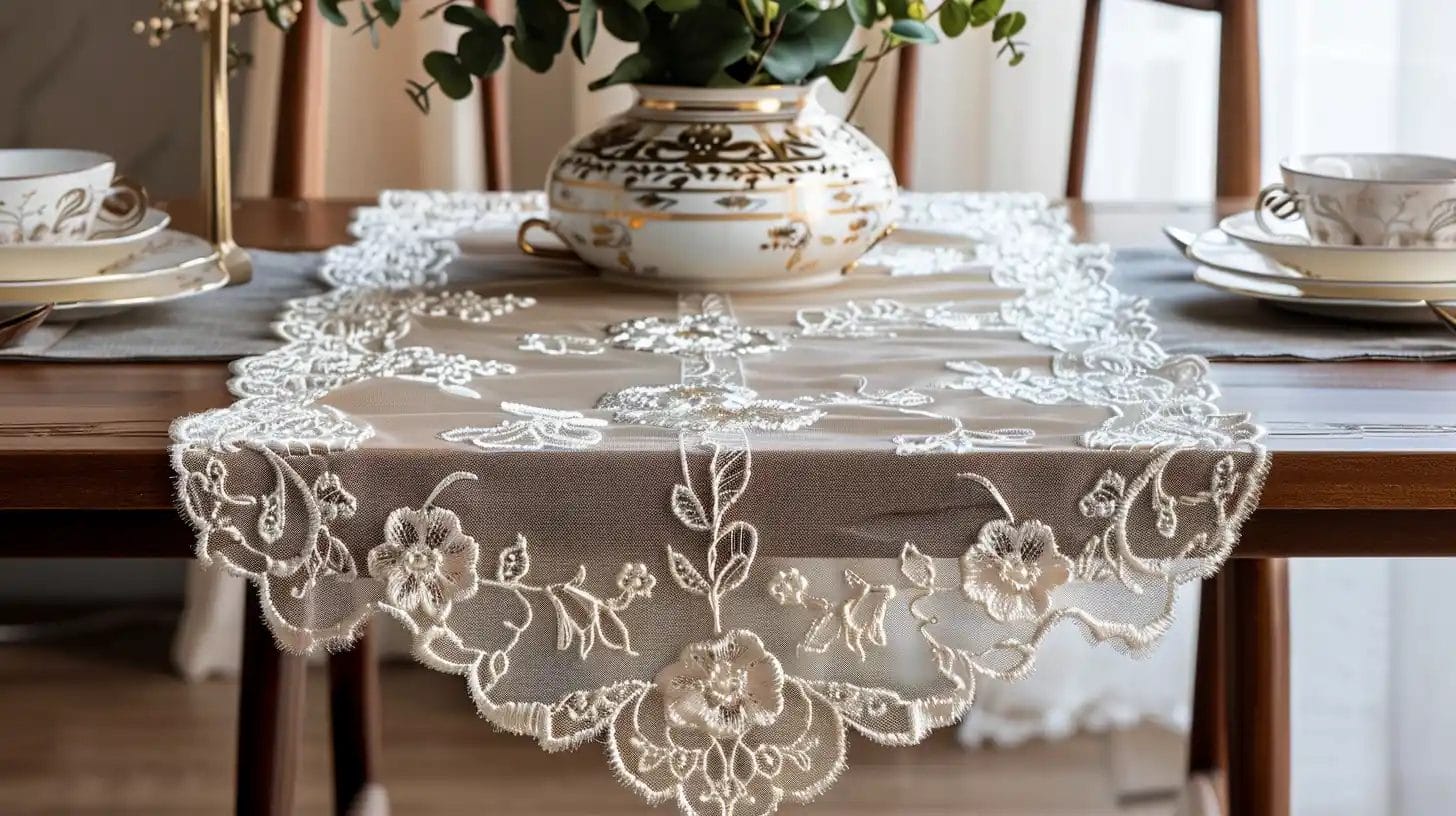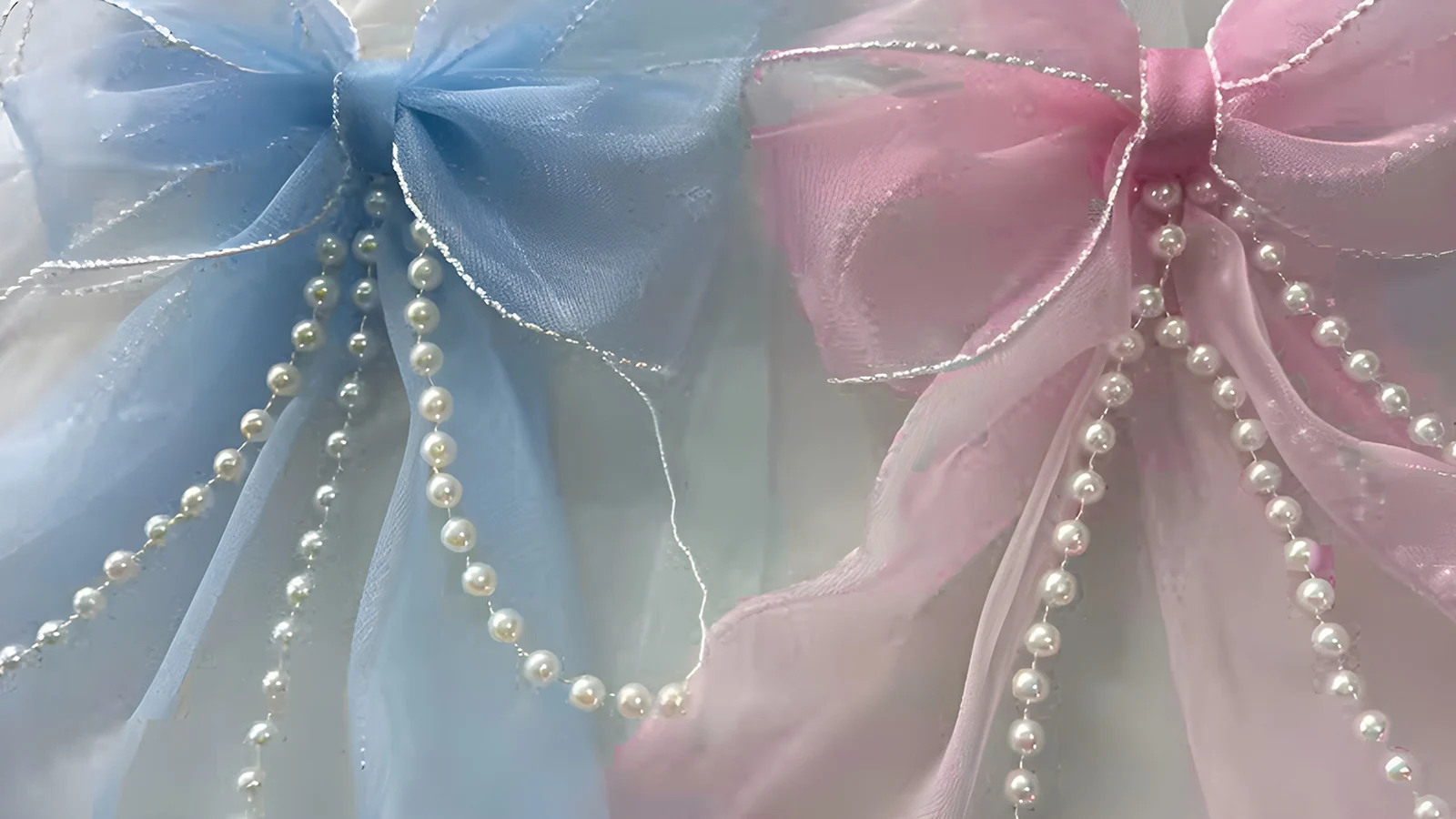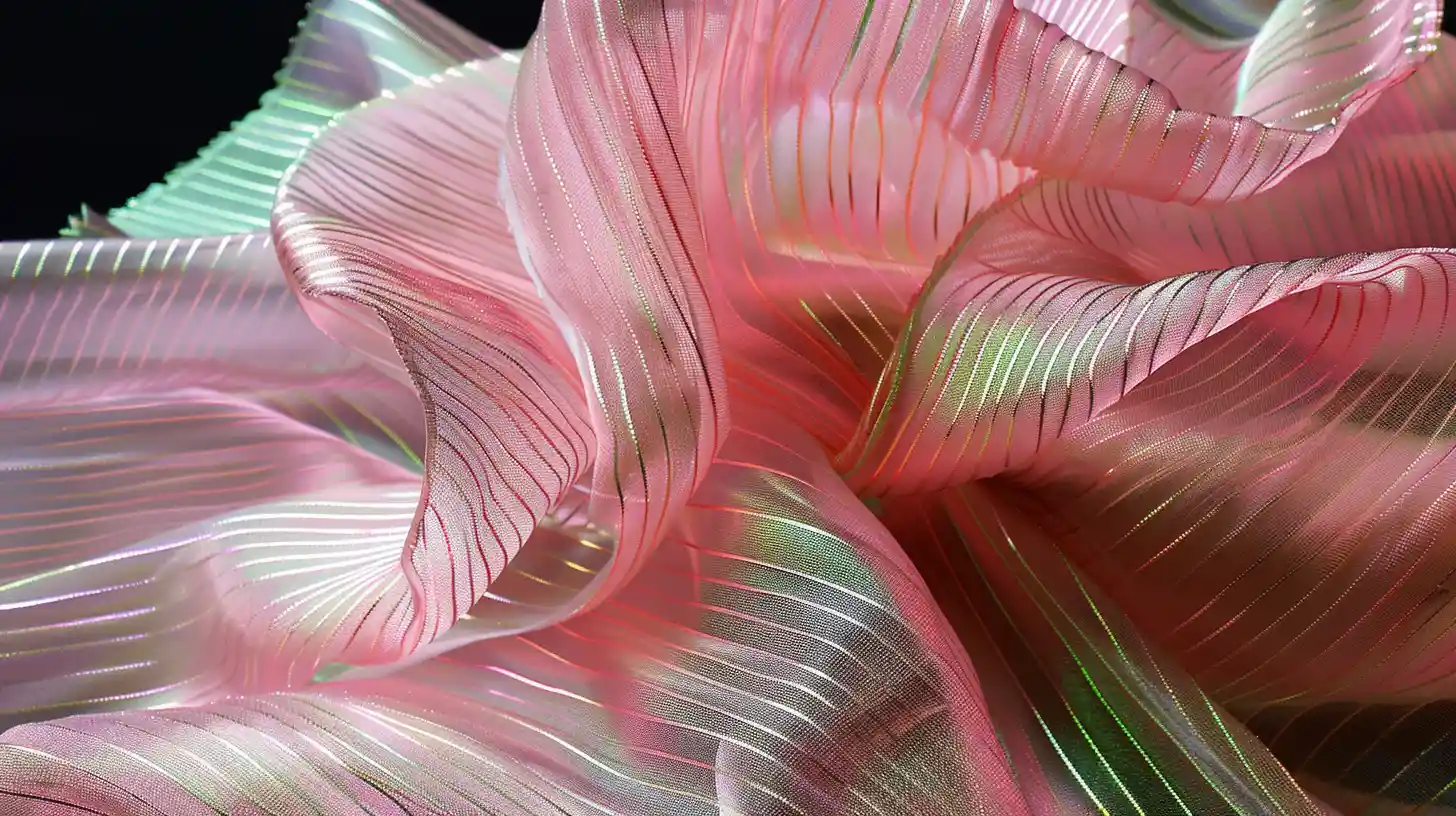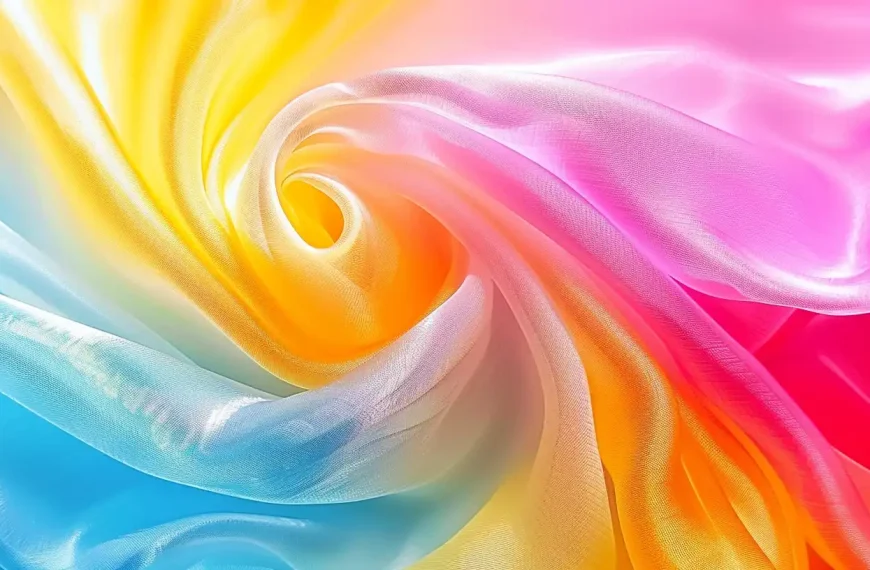Organza is a luxurious fabric known for its elegance. It’s usually made from silk, known for its smooth texture and fine weave. However, it can also be made from synthetic fibers like polyester or nylon, which are more affordable and durable. Let’s explore why organza is valuable in the fashion world and the benefits and drawbacks of its different compositions.
Key Takeaways
- Organza can be made from traditional materials like silk, which is famous for its smooth texture and fine weave.
- Modern organza is often made from synthetic fibers like polyester or nylon. It’s affordable, durable, and available in various colors and finishes.
- The type of spinning fibers determines the organza fabric’s transparency, texture, and strength.
- Weaving involves interlacing yarns in an over-and-under arrangement to create a lightweight, sheer, and structured fabric.
- Finishing techniques like embroidery, printing, and special treatments can transform organza fabric’s appearance, texture, and performance.
History of Organza Fabric
The history of organza is rich and fascinating. This luxurious fabric originates in ancient East Asia, where silk organza production dates back to the Silk Road era.
Silk organza was highly prized in ancient times for its elegance and sophistication. The Silk Road, an ancient network of trade routes, significantly spread silk organza production across the region.
With a heritage spanning centuries, silk organza remains a coveted fabric synonymous with opulence and refinement.
What Is Organza Made of?
When you look into organza, you’ll find that traditional organza is made from silk, a natural fiber produced by silkworms. However, modern organza is usually made from synthetic fibers, which makes it more affordable and durable.
Traditional Materials: Silk
Silk is a natural protein fiber derived from silkworms. It has been the traditional material for centuries to create luxurious and delicate organza fabrics.
Silk organza is well-known for its smooth texture, fine weave, and ability to create elegant, structured garments.
As you explore the world of organza, you’ll find that traditional materials like silk remain popular, especially in high-end fashion markets.
Modern Materials: Synthetic Fibers
Modern organza fabrics have also evolved to incorporate synthetic fibers. These synthetic fibers, such as polyester and nylon, offer a more affordable and versatile alternative to traditional silk organza. They provide a similar look and feel to silk but at a lower price.
Polyester organza, in particular, is a popular choice due to its affordability and similar properties to silk. Nylon organza is another synthetic option used to produce this sheer fabric. The use of synthetic fibers has increased the availability and versatility of organza in the market, offering a wide range of colors and finishes to cater to diverse design needs.
Manufacturing Process of Organza Fabric
As you explore the manufacturing process of organza fabric, you’ll discover that it involves several crucial steps. Each step plays a vital role in creating this elegant fabric, from spinning to weaving and finishing.
Spinning of Fibers
During manufacturing, fibers are spun together in opposite directions to create the twisted yarn that will eventually become the characteristic plain weave fabric.
The spinning process is crucial in determining the final product’s transparency and texture. It also affects the fabric’s crispiness, strength, and ability to drape elegantly.
Weaving Process
How do manufacturers weave the twisted yarn into the characteristic plain weave pattern of organza fabric?
Yarns are interlaced in an over-and-under arrangement during the weaving process to create the fabric’s signature plain weave pattern.
The weave’s tightness determines the fabric’s crispiness and strength, making it a popular choice for creating elegant and structured garments.
Finishing Techniques
Apply various finishing techniques to take organza fabric to the next level. These techniques can transform its appearance, texture, and performance, adding decorative elements, texture, and visual interest.
Choose from various options, including embroidery, printing, and dyeing, to create unique designs and patterns. Hand-finishing techniques like beading, sequining, or appliqué can also add elegance to your fabric.
Some organza fabrics may also undergo special treatments, such as crinkling, pleating, or crushing, to create texture and visual interest.
By applying these finishing techniques, manufacturers can create stunning garments that showcase the beauty of organza fabric.
Characteristics of Organza Fabric
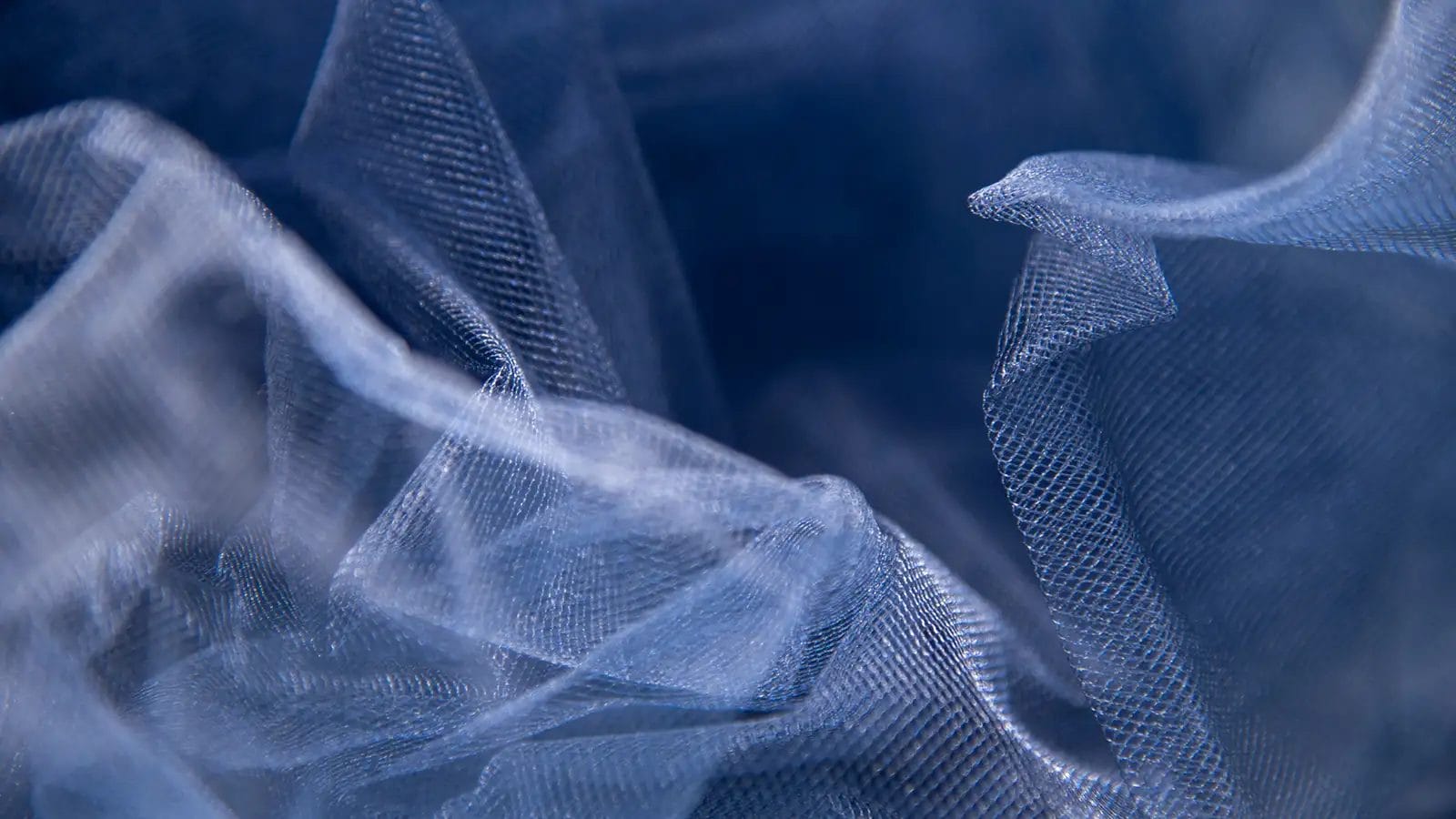
As you explore the organza’s characteristics, you’ll notice its unique texture and feel. Its sheerness and transparency make it ideal for garments that need a touch of elegance.
Additionally, you’ll discover that the organza’s durability and strength are impressive, given its delicate appearance.
Texture and Feel
With its smooth and shiny texture, organza fabric exudes a luxurious appearance that’s hard to ignore. As you run your hand over the fabric, you’ll notice its smooth texture, which gives it a sophisticated feel. The shiny appearance adds to its luxurious aura, making it perfect for special occasions.
Sheerness and Transparency
Organza fabric is characterized by its airy lightness. It’s inherently sheer and transparent, allowing light to pass through its woven threads. As you hold the fabric up to the light, you’ll notice its sheerness, measured by its holes per inch (HPI) rating. This rating determines the level of sheerness, with a higher HPI indicating a denser weave.
Organza’s transparency creates a delicate and elegant appearance. The density of the weave also affects the level of sheerness, with a tighter weave resulting in a more opaque fabric.
Durability and Strength
Organza fabric’s airy lightness belies its surprising durability and strength. It’s an ideal choice for structured garments and decorative purposes.
This strength comes from twisting yarn in opposite directions during production, which enhances its resilience. As a result, organza can hold its shape well, contributing to its durability and allowing it to maintain its structure over time.
10 Different Types of Organza Fabric
As you explore organza fabric, you’ll find it comes in many different types. Here are some common varieties:
- Silk Organza: Made from silk fibers, this type is luxurious, soft, and has a natural sheen.
- Nylon Organza: This is a synthetic alternative to silk organza. It’s more affordable and durable.
- Polyester Organza: Another synthetic option, polyester organza is very strong, resilient, and less expensive than silk.
- Crystal Organza: Known for its sparkling appearance, it’s often used in evening and wedding dresses.
- Mirror Organza: This type has a glossy surface, almost like a mirror. It’s used for dramatic and eye-catching designs.
- Shot Organza: This fabric is woven with two different colored threads, giving it an iridescent look that changes color depending on the angle of light.
- Embossed Organza: Features patterns pressed into the fabric, adding texture and visual interest without compromising quality.
- Embroidered Organza: This type is embellished with embroidery, adding intricate designs to enhance its beauty and elegance.
- Crushed Organza: Treated to have a wrinkled texture, offering a unique appearance and feel.
- Printed Organza: This has printed designs on the surface, adding color and pattern to the sheer material.
Common Uses of Organza Fabric
Organza is a versatile fabric that plays a significant role in both the fashion industry and home decor.
Fashion Industry
In the fashion industry, designers often turn to organza for its ability to add a touch of luxury and sophistication to their creations.
Fashion designers often use organza to craft stunning wedding gowns and bridal wear.
The fabric’s crisp texture and sheer beauty make it perfect for creating elaborate evening gowns and formal attire.
With its versatility and aesthetic appeal, organza remains a top choice for fashion designers seeking to create truly unforgettable pieces.
Home Decor
Homeowners and interior designers often turn to organza to add a touch of sophistication and elegance to their interior spaces.
You can use organza to create stunning sheer curtains that filter natural light, adding a delicate touch to your windows.
In interior design, organza is a versatile fabric that can be used in various ways, from tablecloths to decorative accents. With its wide color and finish options, you can customize organza to fit your unique style and design needs.
Maintenance and Care Tips for Organza Fabric
When caring for your organza fabric, follow these simple rules to keep it looking its best.
Washing Instructions
To keep your organza fabric looking its best, you should Ihand-wash it in cold water to preserve its delicate nature. This gentle treatment will prevent damage and maintain the fabric’s crisp texture.
When washing, avoid twisting or wringing the fabric, as this can cause damage to its structure. After washing, gently remove excess water without twisting or wringing.
Ironing and Storage Tips
After washing and drying your organza fabric, you’ll want to iron it to maintain its crisp texture and elegant appearance. When ironing, use low heat to avoid damaging the delicate fibers.
Place a pressing cloth between the iron and the fabric to prevent scorching. This will help maintain the fabric’s structure and avoid creasing.
When storing organza fabric, it’s essential to prevent creasing. Store it flat or rolled up, rather than hanging it, to maintain its smooth texture. Avoid direct sunlight exposure, as it can cause fading over time.
Conclusion
You’ve learned that organza is a luxurious fabric made from silk or synthetic fibers with a rich history.
Its unique composition and manufacturing process give it a delicate yet strong texture, making it perfect for luxury garments and decorative applications.
With its elegant appearance and durable quality, it’s no wonder organza is a top choice in the fashion industry.
Now that you know what organza is made of, you can appreciate its beauty and sophistication even more.
Learn more about fabric knowledge from the Longan Craft Blog, and dive into the fabric world with Longancraft!
FAQs
Is Organza 100% Polyester?
Organza was originally made from silk. But modern versions, crafted from 100% polyester, offer a more affordable and durable alternative.
Why Is Organza so Expensive?
Skilled labor, intricate weaving techniques, and high-quality materials like silk drive up the price.
Is Organza a Good Fabric?
Organza is an excellent fabric choice, providing a luxurious appearance, lightweight feel, and the ability to maintain its shape well. This makes it ideal for creating elegant and structured garments that radiate sophistication.
What Is the Difference Between Cotton and Organza?
Cotton and organza differ in texture, feel, and purpose. Cotton’s soft, breathable, and versatile, while organza’s stiff, sheer, and elegant, making it perfect for special occasions, not everyday wear.

